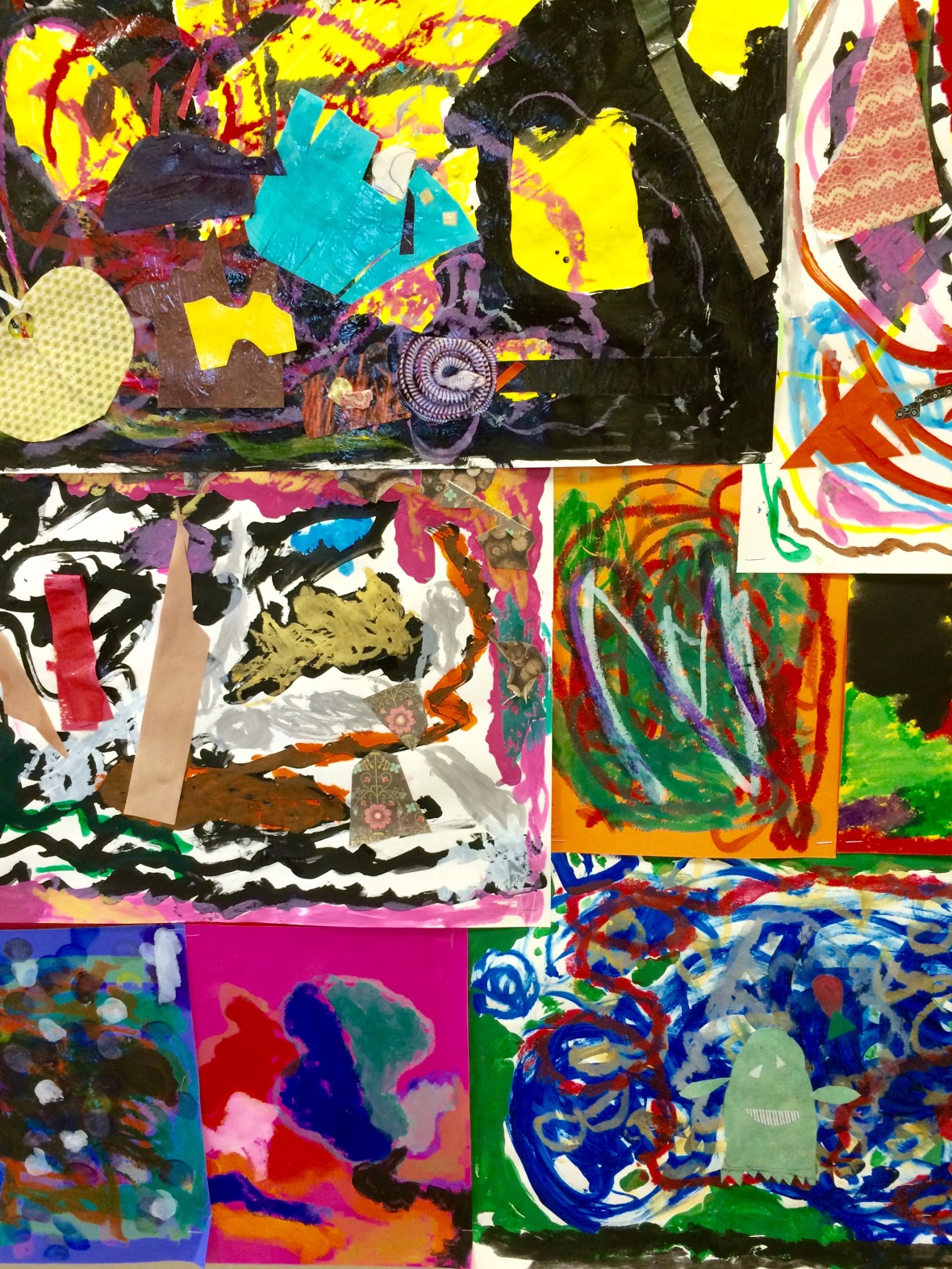 Kindergarten and 1st grade took part in a very expressive art and music collaboration this winter, examining the nuances of abstract and nonrepresentational artwork with the eccentric music of Igor Stravinsky as their guide. Stravinsky was the Russian composer and mastermind behind the somewhat controversial ballet and orchestral concert piece, The Rite of Spring. Upon its debut, The Rite of Spring put audience members into a tizzy, due to both the plot of the ballet and experimental sound of the piece. In addition to incorporating many primitive rituals as a way of bringing to life the arrival of spring on stage, the ballet also highlights the death of a young girl, or sacrificial victim, who meets her end by literally dancing herself to death. For the time, Stravinsky’s score took many creative risks, including experiments in tonality, meter, rhythm, stress and dissonance. Although Stravinsky denies the piece having any roots in Russian folk music, analysts believe he pulled from many traditional folk sounds and songs. From the description of it alone, you can only imagine how this highly influential piece of music might have shocked its audiences and inspired the minds of Maury’s young visual artists. Take a moment to listen and watch the visualization of this enchanting piece of historic music. Observe how shape and color take on the identity of different instruments and pitches!
Kindergarten and 1st grade took part in a very expressive art and music collaboration this winter, examining the nuances of abstract and nonrepresentational artwork with the eccentric music of Igor Stravinsky as their guide. Stravinsky was the Russian composer and mastermind behind the somewhat controversial ballet and orchestral concert piece, The Rite of Spring. Upon its debut, The Rite of Spring put audience members into a tizzy, due to both the plot of the ballet and experimental sound of the piece. In addition to incorporating many primitive rituals as a way of bringing to life the arrival of spring on stage, the ballet also highlights the death of a young girl, or sacrificial victim, who meets her end by literally dancing herself to death. For the time, Stravinsky’s score took many creative risks, including experiments in tonality, meter, rhythm, stress and dissonance. Although Stravinsky denies the piece having any roots in Russian folk music, analysts believe he pulled from many traditional folk sounds and songs. From the description of it alone, you can only imagine how this highly influential piece of music might have shocked its audiences and inspired the minds of Maury’s young visual artists. Take a moment to listen and watch the visualization of this enchanting piece of historic music. Observe how shape and color take on the identity of different instruments and pitches!
After weeks of familiarizing themselves with the music, students became so attuned to the high and low, soft and loud, fast and slow aspects of the piece that they were able to envision new plot line and stories. Their lines and shapes mimicked the patterns heard throughout the piece. They attached characters to every instrument and designed settings that were both terrifying and whimsical. Foxes in the woods, houses on fire, and alligators lurking below the surface of the pond were just a few of the creative ways students interpreted the sounds. Creating abstract artwork with plot, conflict, characters and setting helped create a strong connection between art and literacy in a fun and memorable way.
 We began as all great artists do, by developing a plan and practicing the lines, shapes, patterns, and rhythms we felt belonged in our pieces before diving into the final work of art.
We began as all great artists do, by developing a plan and practicing the lines, shapes, patterns, and rhythms we felt belonged in our pieces before diving into the final work of art.
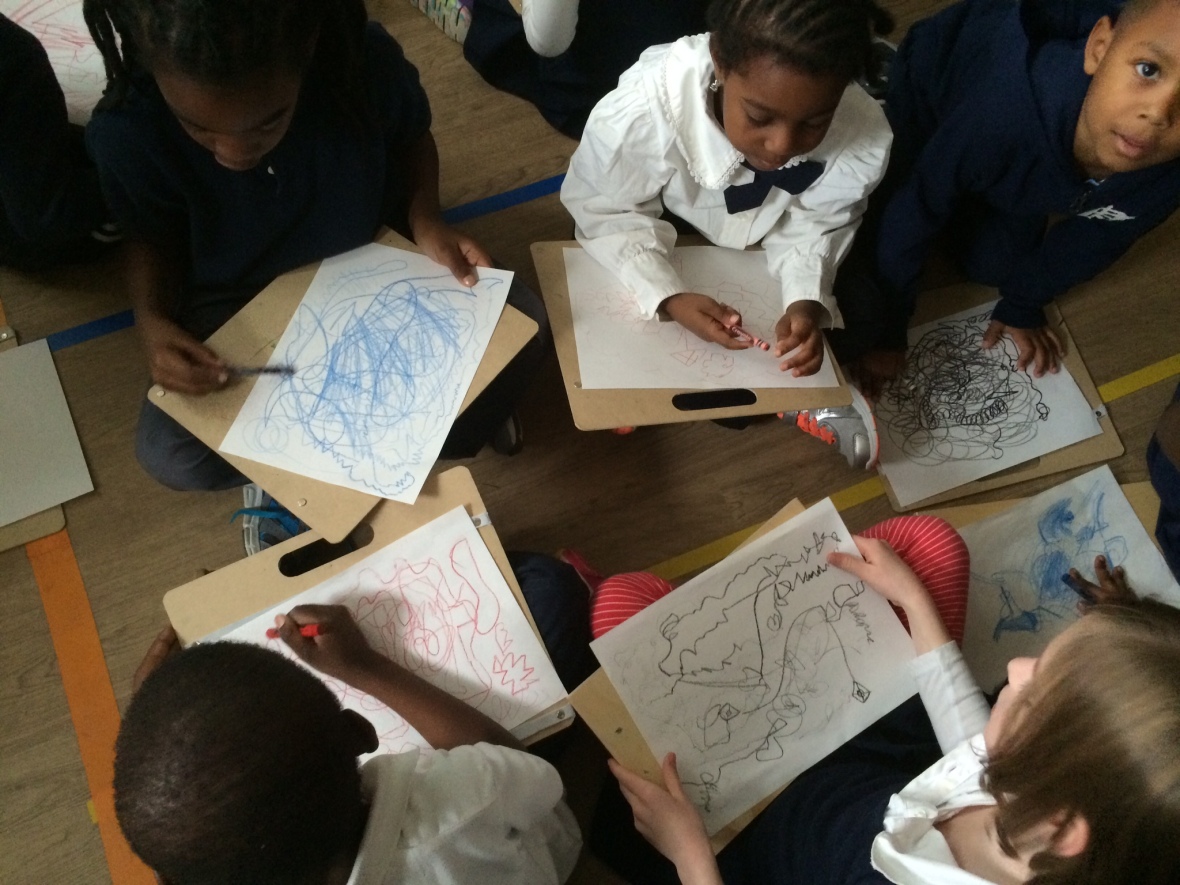 We conferred with our classmates by explaining our vision and receiving clarifying feedback.
We conferred with our classmates by explaining our vision and receiving clarifying feedback.
 We took part in many abstract and nonrepresentational art making activities in order to become comfortable with meaningful mark-making. Our donorschoose.org funded paint sticks were essential to the success of our practice pieces, as well as our final works of art.
We took part in many abstract and nonrepresentational art making activities in order to become comfortable with meaningful mark-making. Our donorschoose.org funded paint sticks were essential to the success of our practice pieces, as well as our final works of art. 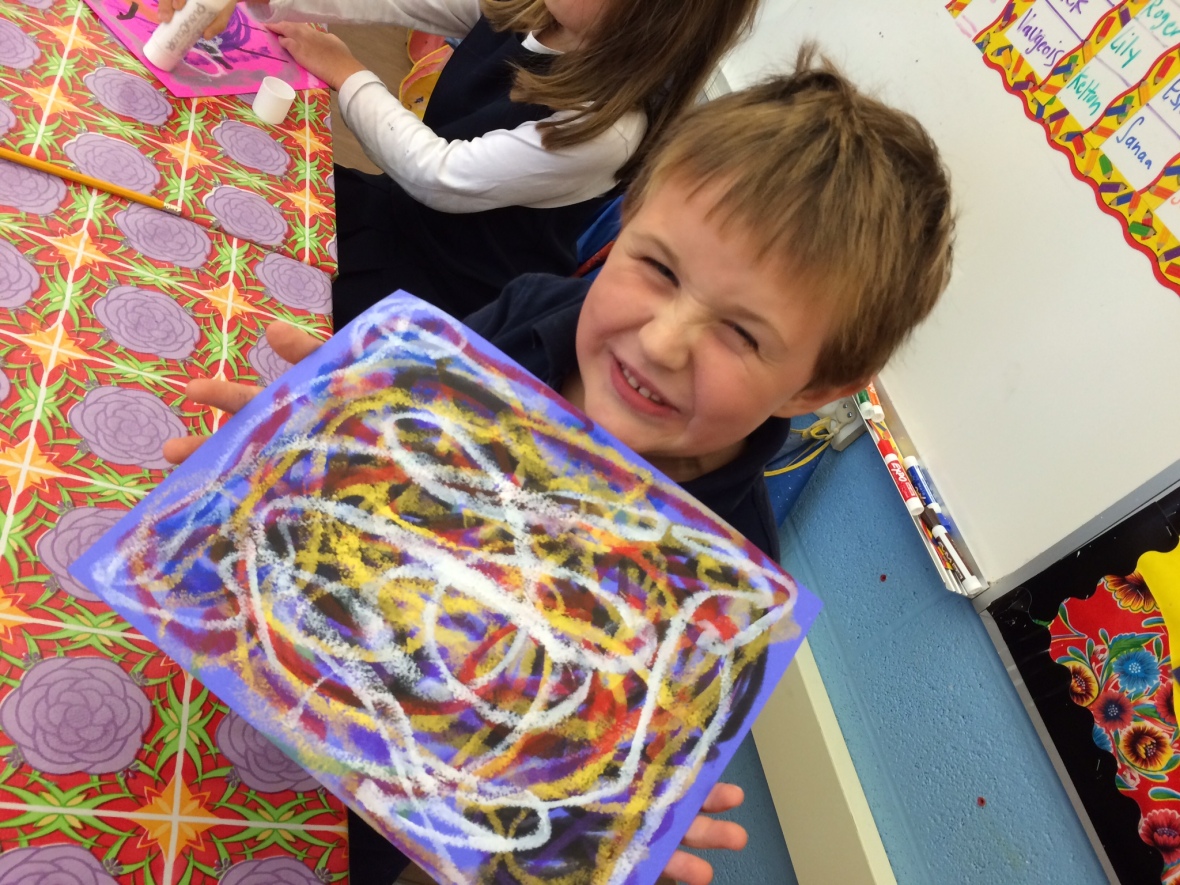
 We even practiced abstracting our initials by rotating the letters in our names to create inversions through repetition.
We even practiced abstracting our initials by rotating the letters in our names to create inversions through repetition. The letter “L”
The letter “L”
 The letter “B”
The letter “B” Look at how cool the letter “A” becomes when rotated!
Look at how cool the letter “A” becomes when rotated!
 The works of art on display outside the art studio are either non-representation or abstract interpretations of The Rite of Spring. Color, line, shape, and size were all things the artists considered when compiling their narrative compositions. Although upon first glance the viewer may not be able to decode each and every story, the mesmerizing artwork will pull you in and make you feel the same way the very first audience listening to Stravinsky’s music felt on opening night! Enjoy and beware!
The works of art on display outside the art studio are either non-representation or abstract interpretations of The Rite of Spring. Color, line, shape, and size were all things the artists considered when compiling their narrative compositions. Although upon first glance the viewer may not be able to decode each and every story, the mesmerizing artwork will pull you in and make you feel the same way the very first audience listening to Stravinsky’s music felt on opening night! Enjoy and beware!
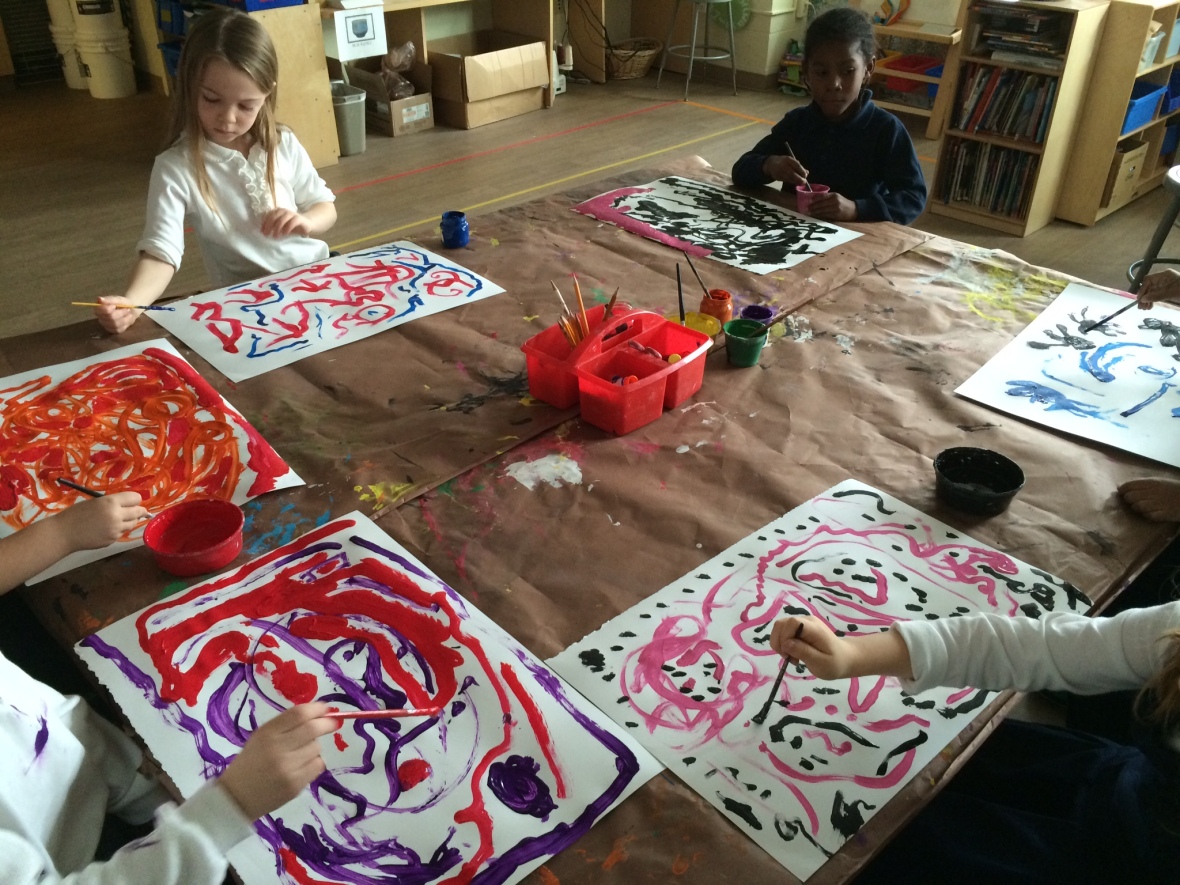 Creating the high and low pitches with color and line to begin.
Creating the high and low pitches with color and line to begin.
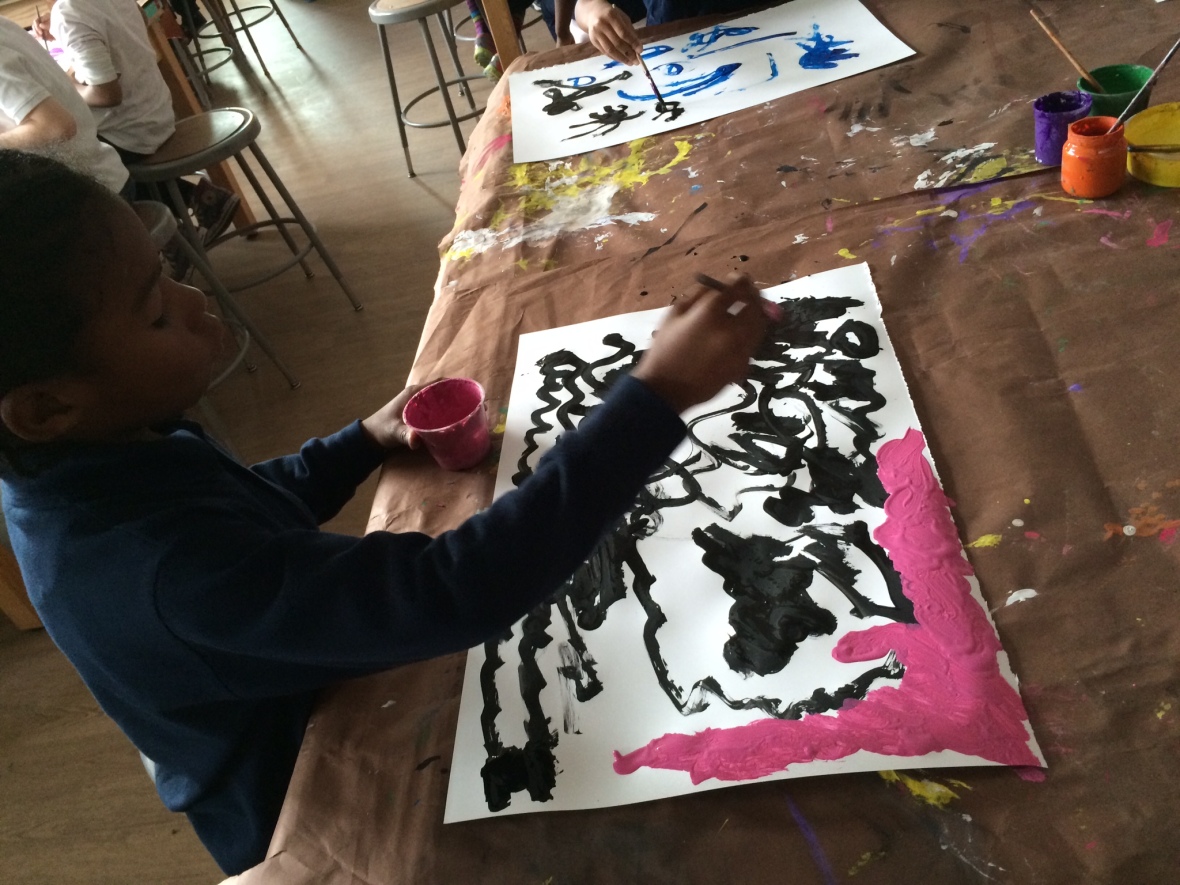 The black paint in this canvas represents the low pitches throughout Stravinsky’s piece. The pink represents the high and fast notes.
The black paint in this canvas represents the low pitches throughout Stravinsky’s piece. The pink represents the high and fast notes.

